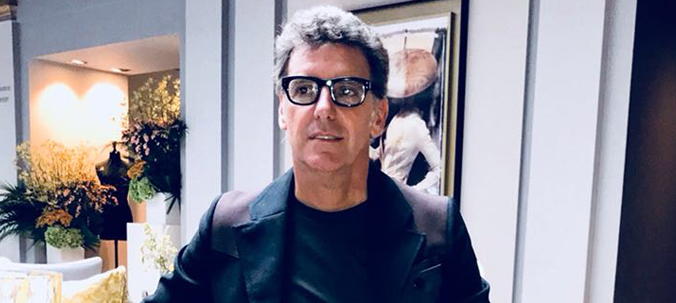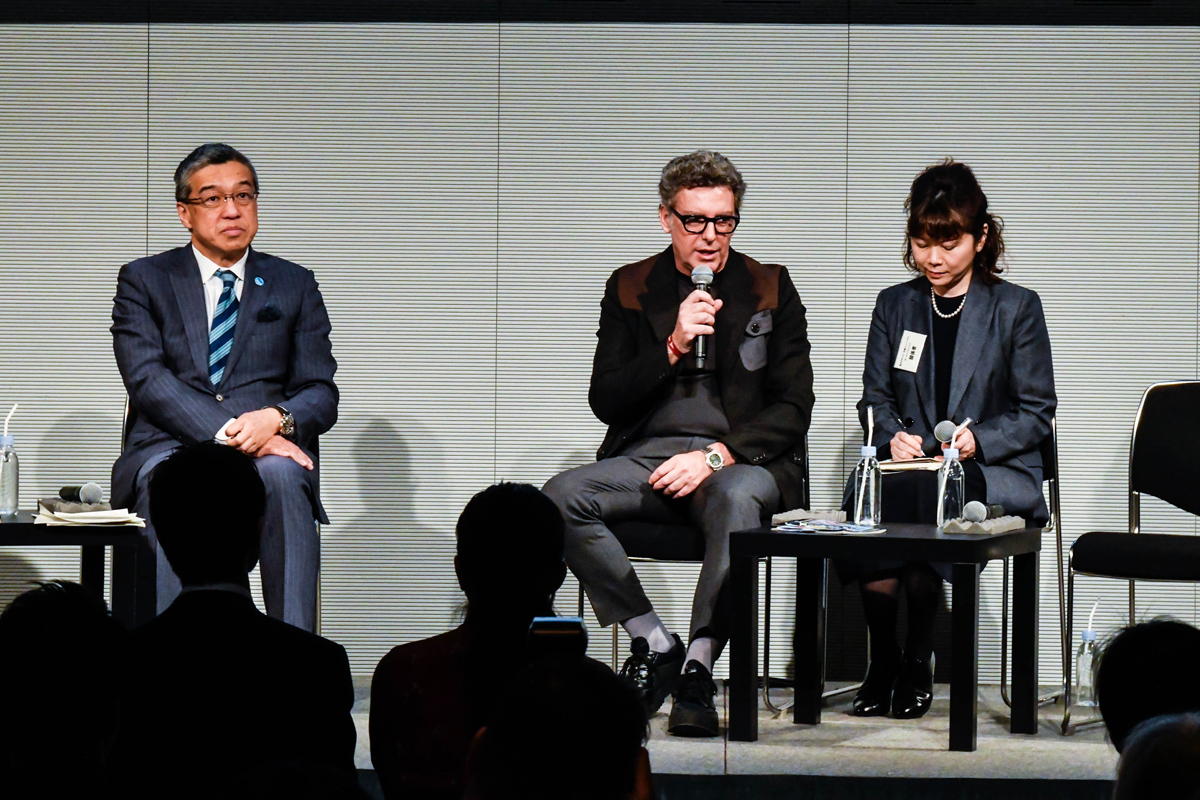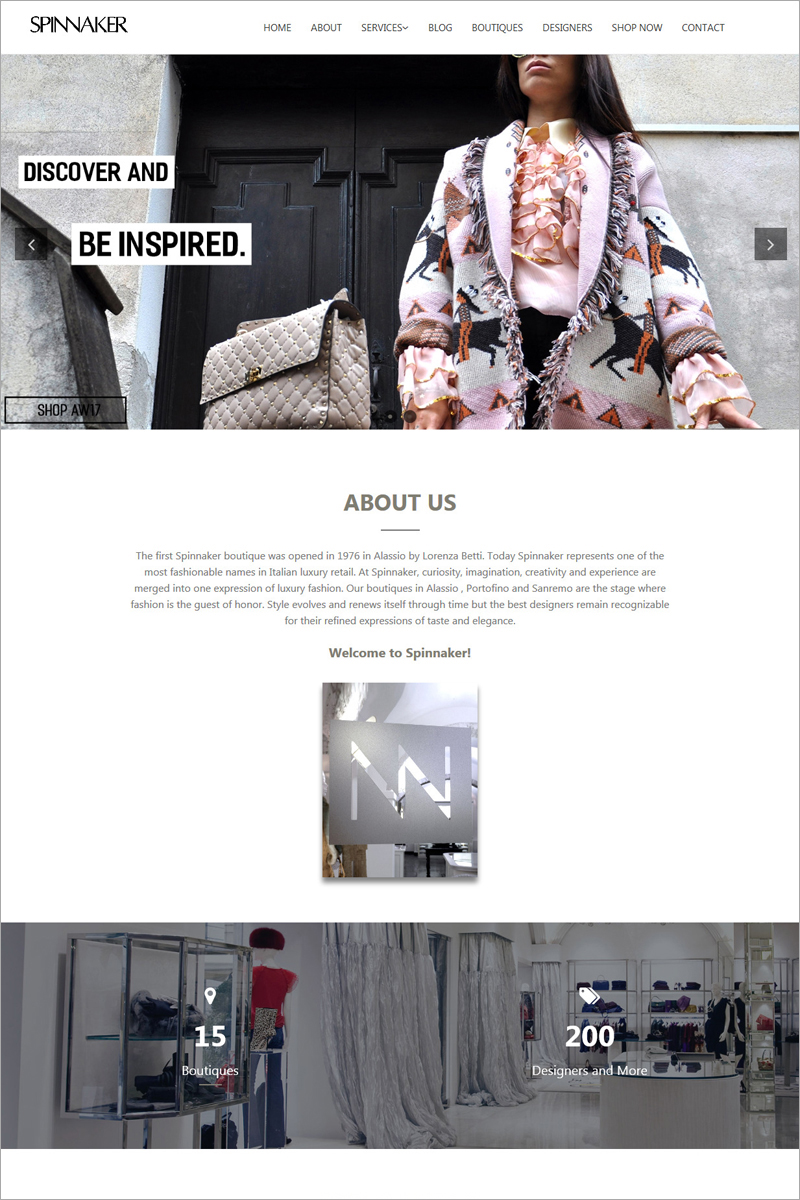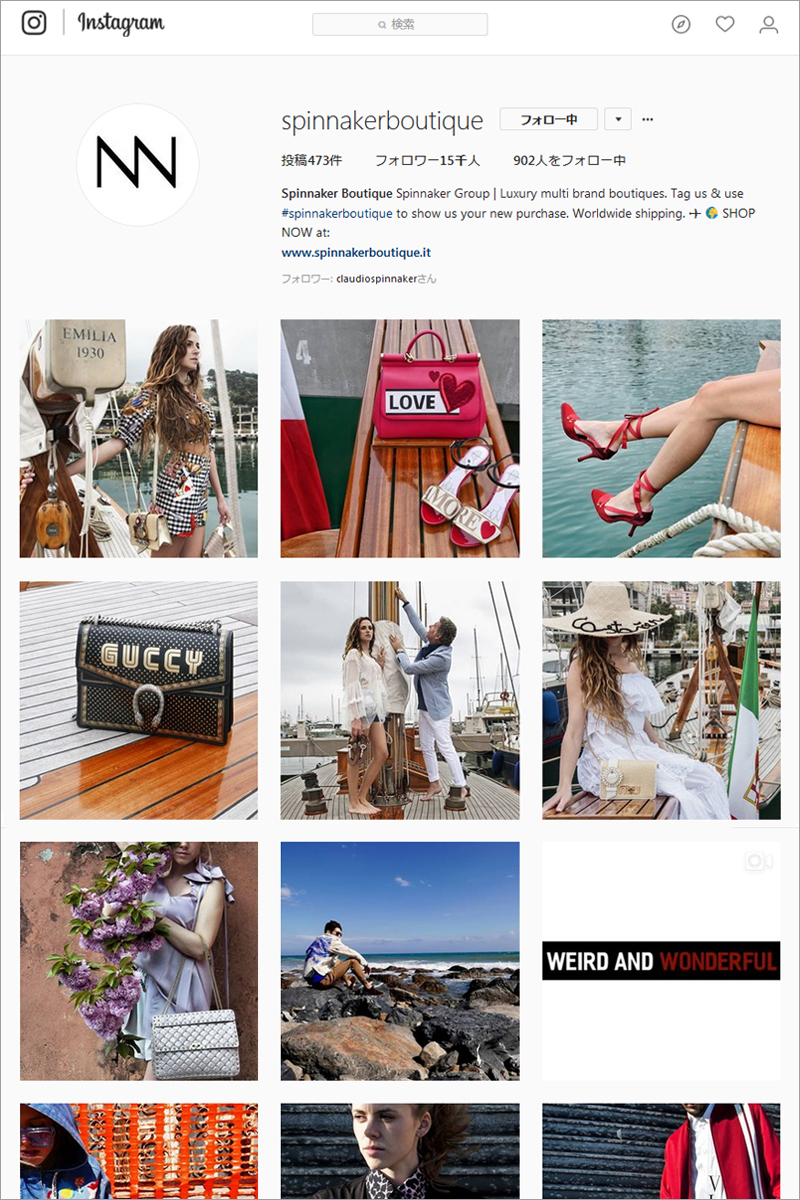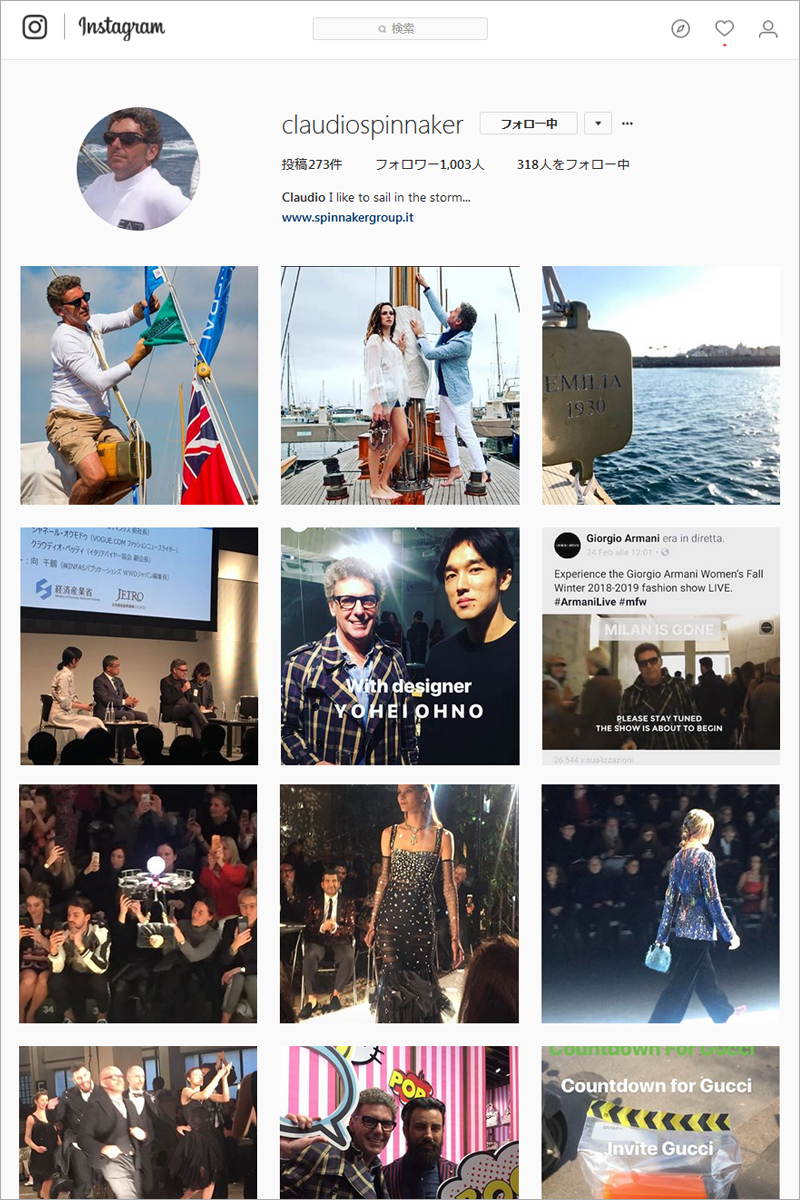Claudio Betti
AmazonFWT 2018 A/W Overseas Guest Interview vol. 3
Vice-President Camera Italiana Buyer Moda
Claudio Betti:
[ Instagram ] https://www.instagram.com/claudiospinnaker/
Spinnaker Boutique:
[ Website ] http://www.spinnakergroup.it
[ Instagram ] https://www.instagram.com/spinnakerboutique/
[ Facebook ] https://www.facebook.com/spinnakerboutique
During the Amazon Fashion Week TOKYO 2018 A/W term, Mr. Claudio Betti, Vice-President of Camera Italiana Buyer Moda, visited Japan by invitation from JETRO. He is also the CEO of the “Spinnaker Group”, a long established chain of boutiques in Italy, since 1976. During this visit, in addition to viewing collection shows, he made an appearance as one of the speakers at the opening event of “Young Designers Support Consortium”, aimed at providing overseas support to young Japanese designers, and visited some brands. We’ve asked him on Camera Italiana Buyer Moda, his impression of fashion week in Tokyo, and advice on Japanese fashion brands to succeed in overseas markets.
How many times have you been in Japan?
I’ve been here many, many times. My first visit was 20 years ago, and for the following 10 years after that, I came a few times a year, but this is my first visit in 10 years. The Camera Italiana Buyer Moda has been paying attention to the fashion industry in Japan and Tokyo fashion week, so a representative has been coming every season until last season, but this season, the President asked me to come, saying “I want you to check Japanese fashion from your point of view, and give me your opinion”, so I came.
What kind of organization is Camera Italiana Buyer Moda, and what kind of activities do you do?
Created in 2000, Camera Italiana Buyer Moda, or the Italian Chamber of Buyers, is a non-profit organization that brings together the owners of Italian multi-brand stores of luxury. One of our major activities is “THE BEST SHOPS” project, aimed at raising the quality and service of retail stores in Italy. “THE BEST SHOP” expresses the spirit of what Camera Italiana Buyer Moda is, and an important hallmark signing qualified shops and services. To become an associate, the applicant undergoes strict selection process, in order to certify the importance and prestige of being a member, recognized by consumers as a distributor of excellence, with the ability to offer its customers unique products and services. Presently, approximately 500 shops, run by 100 companies are selected and certified in THE BEST SHOPS. One of our roles is to activate domestic shops by excavating new overseas brands and/or scouting new designers, therefore I am here this time.
You also operate several shops, don’t you?
I own a group of boutiques called SPINNAKER, which operates 15 stores nationally in Italy, and an on-line store. It was first opened in 1976, so I think we were one of the first in luxury select shops. Buyers from around the world come to check our window and selection, so we are sort of an influencer of select shops. Like United Arrows or Beams in Japan. I find that in Japan, Tokyo is at the center of fashion, and trends spread out from here, but in Italy, preference differs in each area, and fashion tastes are widely spread. So, one of the roles of a select shop as ourselves, is to create a trend fit for each area. The word “SPINNAKER”, means the main mast of a yacht, which is raised to catch as much wind as possible. I, myself and my whole family enjoy sailing, so we named our shop in relation to sailing. Also, our shops are located at beautiful ocean-side resorts, such as Alassio, Portofino, Sanremo, Santa Margherita, etc., so we figured this name is appropriate.
Have you visited any place other than the fashion week venue?
I visited some select shops in Roppongi, Omotesando and Nakameguro, and, “Y.&SONS” at Kanda-Myojin. At Y.&SONS, I placed a special order for a Norwegian Rain coat, which can be worn over a Kimono. I was thinking I want a rain coat mixing the fisherman style of Norwegian Rain and Kimono, so this was a perfect opportunity.
Compared to that of other cities, what do you think of the fashion week in Tokyo?
For example, in fashion weeks in Paris or Milan, the whole town is involved. Hotels and restaurants become fully booked with many people visiting from around the world. People of all sorts of fields come, not just fashion, and through the whole week, economy seems to move centered around fashion. In Tokyo, various related events are held at various locations, but it is individualized, and there isn’t that feel of total connection. It is important for the whole town to come together, to raise the mood of excitement of fashion week. This is not easy, and it will take time, but fashion week is an excellent financial opportunity for fields other than fashion also, so I think it makes sense to utilize it to its full potential.
What are your thoughts on the shows or collections in Tokyo fashion week?
Seeing the shows, I feel each designer has strong convictions towards their creations. Each show is coordinated well, and the ideas, concepts behind the collections were clear also. However, I also felt that many designers are too influenced by European brands. European buyers are not looking for Japanese brands which are a copy of European brands. We are looking for brands with new or foreign aspects not found in European brands, brands which have an identity unique to Japanese brands.
Please tell us which shows were impressive.
TOKYO FASHION AWARD winning brands are showing today, and I am looking forward to seeing them , but among those I have seen so far, I was impressed by the use of fabrics in the runway show of KUON. It was wonderful how they incorporated precious Japanese old fabrics such as sashiko-quilting, indigo dye, etc., as textile for their clothing. It may be difficult to express a Japanese identity in a commercial line, but in this collection, it was well expressed through the use of traditional textiles. HYKE was also very good, with their clean, Japanese-ish cutting and design, in addition to their collaboration with THE NORTH FACE. Their balance of Japanese identity and commercialism was superb, and I thought it was excellent. It is, of course very important for a designer or brand to have its unique identity, but from a buyer’s point of view, we need items which will sell, so being commercial is also very important. By collaborating with THE NORTH FACE, HYKE has shown their creation is commercial worthy, making it easy for buyers to select them. In Japan, I have noticed select shops developing collaboration items with world renown brands such as NIKE or Adidas, but designers should actively utilize this method also, because it is an effective way to spread acknowledgement of their brand, and show they are commercial worthy.
Not limiting to brands participating in this terms AmazonFWT, are there any Japanese brands you are interested in?
The other day, I visited the atelier of Ujoh, and I think they are a good brand. I also like sulvam, whom participated in Pitti Uomo last year as a guest designer. For men’s, Pitti Uomo is important. Mainly classic and formal items are shown, but the men’s exhibitions start from Pitti Uomo, so many products gather here. But if you are looking for fashion, not items, I think you should go to fashion weeks in Paris or Milan. Please don’t misunderstand me. I’m not saying which is better, simply, different places for different needs.
What do you think is needed for Japanese brands to succeed in the world?
First, I think a system must be made in Japan. Fashion changes very quickly, so the shop side must do its buying quickly to keep up with these changes, and hence, buyers are extremely busy and always pressed for time. In Paris or Milan, there are popular showrooms at which potential brands are gathered, so buyers can see various brands without running around town and purchase efficiently. In Japan, although there are some showrooms, there is no such concrete system of gathering potential brands, so there is a strong feeling that buyers must go around town, visiting shops and ateliers to find a new potential brand, which is too time consuming and inefficient. In this sense, a fashion week in Tokyo is good because some potential brands are gathered in one place, allowing for buyers to check them out at once. What overseas buyers are looking for in Japanese brands is, cool and crazy. It is also important for the designer to have their own unique identity, and to be able to speak of their history and tradition. When I spoke at the event of the Young Designers Support Consortium the other day, as a message to young designers I gave the word “Coraggio!”, which means “be courageous!”. Because of the timing of Tokyo fashion week which starts after that of other major fashion cities such as Paris or Milan, and buyers have already seen collections there, I think it is a challenging task to create a collection which will leave an impact, but be courageous and bold in pursuing your creativity, and challenging the world. I think Japanese designers have much potential, and I am looking forward to their leaping out into the world.
INTERVIEW by Akane Fujioka
INTERPRETATION by Aiko Osaki


